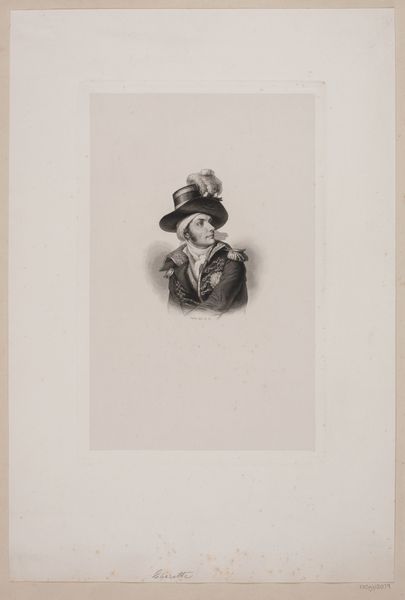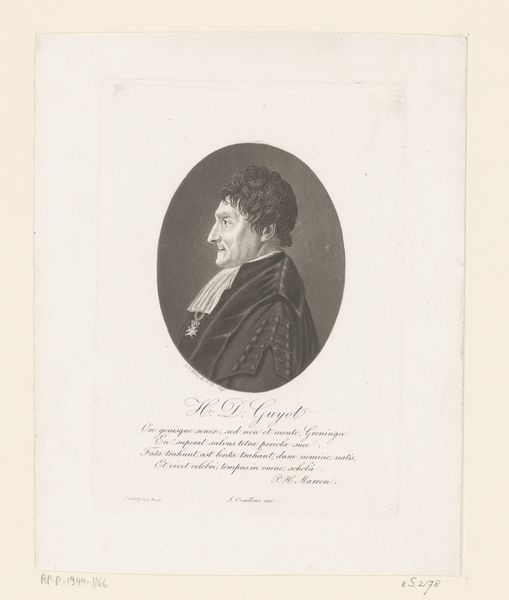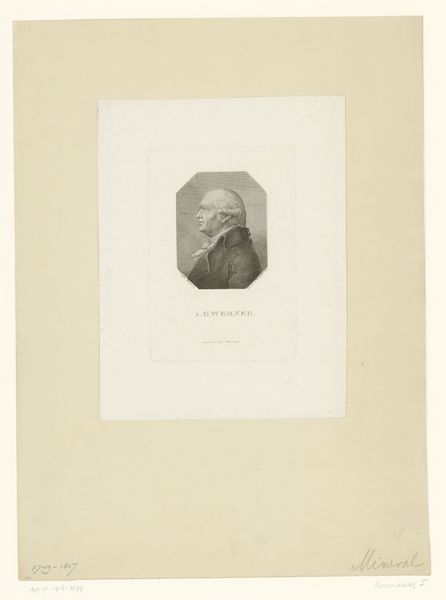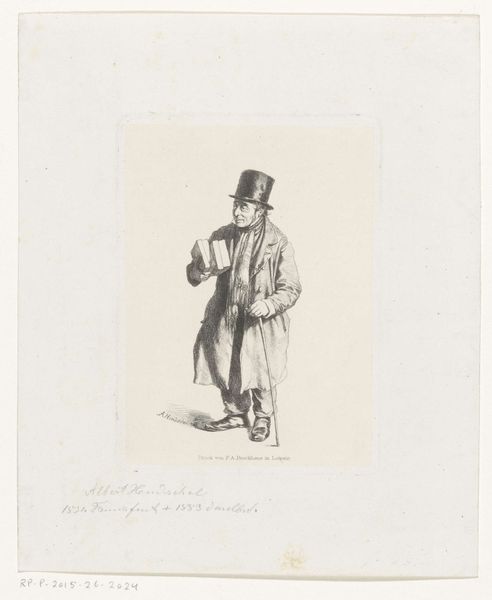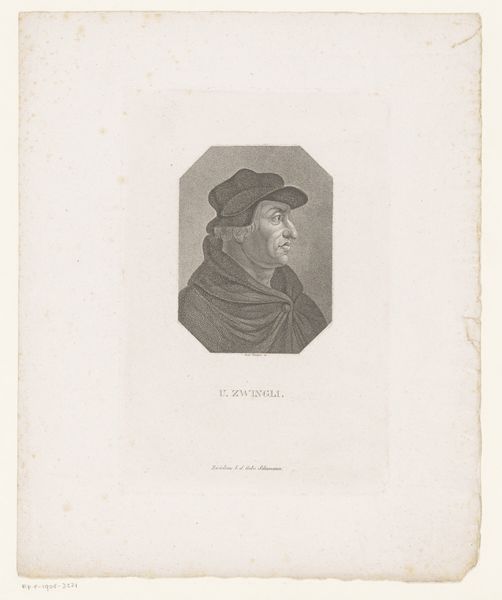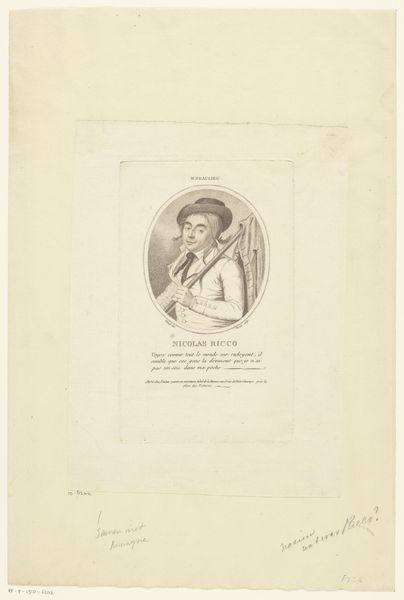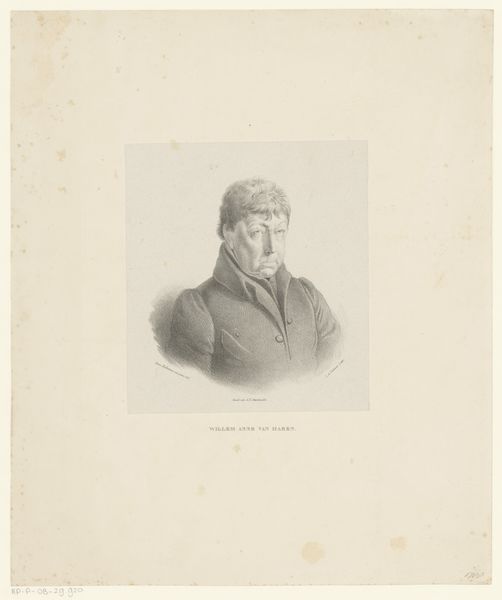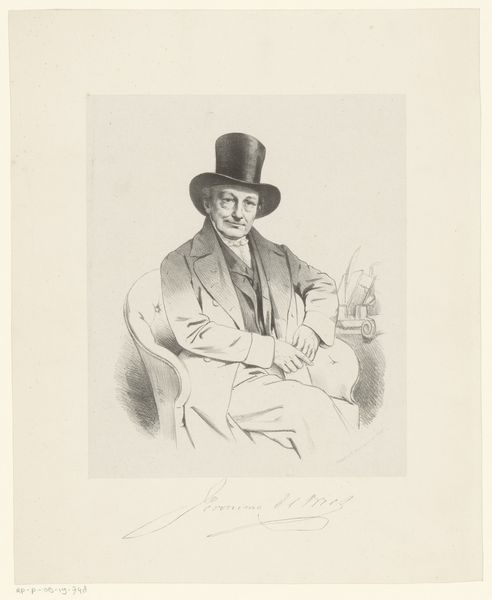
print, engraving
#
portrait
#
pencil drawn
#
neoclacissism
# print
#
pencil sketch
#
old engraving style
#
engraving
#
realism
Dimensions: height 212 mm, width 131 mm
Copyright: Rijks Museum: Open Domain
Curator: This print, entitled "Portret van André Dumont", is an engraving dating to between 1829 and 1883. It offers us a glimpse into the likeness of a figure named André Dumont. What's your initial take? Editor: Stark. Very understated. The sharp profile, the pale paper – it all speaks to a very specific moment, doesn't it? An image steeped in the cool detachment of the emerging bourgeoisie. I can't help but see a statement on class and status here. Curator: I agree it’s rather sober. Historically speaking, the rise of printmaking made images like this far more accessible. Before, portraiture was largely reserved for the wealthy elite. This engraving offered a more democratic visual representation. Editor: Democratization of imagery doesn’t necessarily equalize power. Looking at it from a contemporary lens, what narratives are being amplified, and who's left out? What norms are perpetuated? The subject's top hat becomes symbolic; exclusion by expensive attire. Curator: It’s fascinating to consider how fashion signals belonging, and its inherent exclusionary aspects. Yet the neoclassical elements and even the print medium served as a kind of normalizing function. It placed Dumont within a familiar visual language understood by the emerging middle class, thereby reinforcing that class. Editor: The technique further solidifies the message: engraving lends an air of authority and permanence. In essence, these visual decisions serve to emphasize a conservative, aspirational narrative tied to class and identity. But if the tools became widespread, how do you think they helped and hurt these class issues? Curator: Printmaking offered new possibilities of social mobility. Artists gained a different means to make a living by reproducing their work for larger audiences. It democratized artistic representation, while perhaps also solidifying class structure. Editor: Thank you. This print certainly provokes layered perspectives and ongoing conversations regarding imagery and class. Curator: I appreciate you making us question accessibility in our narratives as well.
Comments
No comments
Be the first to comment and join the conversation on the ultimate creative platform.
